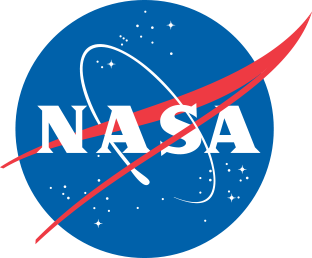AirBorne Field Mill (ABFM) Project
Kennedy Space Center
The AirBorne Field Mill project was conducted near Kennedy Space Center during June 2000, February 2001 and May/June 2001. It is a cooperative project between the NASA Kennedy Space Center, National Center for Atmospheric Research, NASA Marshall Space Flight Center, University of North Dakota, University of Arizona, NOAA National Hurricane Lab., and in Feb. 2001, the NOAA Environmental Technology Lab.The goal of the project is to investigate the microphysical and radar conditions present when strong electric fields exist in anvils or debris clouds from thunderstorms or layer clouds and how the electric fields and microphysical content and radar reflectivity decay in time and space. Airborne measurements of the 3-D electric fields and associated cloud and precipitation particle content were made in anvils, debris clouds and weak storms near Kennedy Space Center using the Univ. of North Dakota (UND) Citation II jet aircraft. These airborne measurements were coordinated with measurements from the WSR74-C radar at Patrick Air Force Base and the National Weather Service NEXRAD WSR88D radar in Melbourne, Florida. Many of the airborne measurements were made within range of the KSC Lightning Ranging and Detection (LDAR) system, the KSC Cloud-to-Ground Lightning Sensing System (CGLSS), and the KSC surface electric field mill network so that we know when and where lightning was occurring and when electric fields were enhanced at the ground near KSC.
This web site contains plots and images of radar, airborne electric field, microphysics and lightning data recorded during the flights of the UND Citation and additionally, ongoing analysis of the different cases.
This project is funded primarily by NASA Kennedy Space Center with a significant contribution from the National Reconnaissance Office. The science team acknowledges with gratitude the technical, logistic, airspace control, communications, and scientific support of many agencies and contractors whose contributions have been essential to the success of our efforts
Instructions for Navigating this WebSite
To the left is a list of flight cases with links to the "homepage" for that flight. Each "flight homepage" contains graphics in various combined formats of radar, in-situ aircraft, and lightning measurements, e.g. MER plots combine Microphysics, Electric fields and Radar. Links to applets on these homepages allow quick perusal through a time series of plots.NOTE, the applets initially take some time to load. And we sometimes have problems with the applets on MAC or Linux operating systems.
Products -- A list of flight days, flight times and products available (updates not current).
Summary -- A partial list of contributors own websites.
Data List -- A partial list of data products available.
Acknowledgment & Usage Information
Most of the ABFM Project Web site content was originally produced by the National Center for Atmospheric Research (NCAR) under contract to the National Aeronautics and Space Administration (NASA) at Kennedy Space Center (KSC) and it is reproduced here with permission. NCAR is managed by the University Corporation for Atmospheric Research (UCAR) and sponsored by the National Science Foundation. The contribution of NCAR to the assembly, quality control, and distribution of the data and associated web pages is acknowledged with gratitude.
Users of the ABFM Project Web site agree to credit UCAR/NCAR and NASA/KSC in any publications that result from the utilization of any information and images provided within this site. The user also understands that UCAR/NCAR and NASA/KSC are not obligated to provide any support, consulting, training, or assistance of any kind with regard to the use, operation, and performance of this Web site and its information and images nor to provide the user with any updates or revisions.
The information provided on the ABFM Project Web site is intended to be descriptive and not an endorsement.


